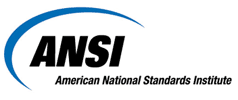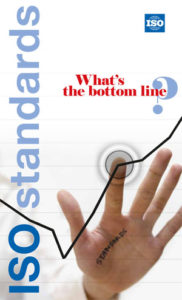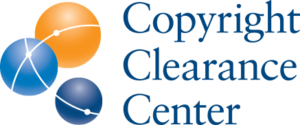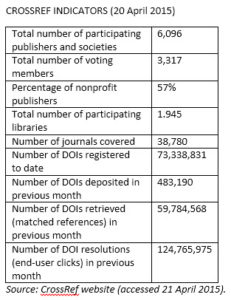We in publishing consider a number of organizations important for our professional development. There are the membership societies for individuals, beginning with our own Council of Science Editors (CSE, www.councilscienceeditors.org) and including our sister societies:
- American Medical Writers Association (AMWA, www.amwa.org)
- American Society for Indexing (ASI, www.asindexing.org)
- Association of Earth Science Editors (AESE, www.aese.org)
- Editorial Freelancers Association (EFA, www.the-efa.org)
- European Association of Science Editors (EASE, www.ease.org)
- International Society of Managing & Technical Editors (ISMTE, www.ismte.org)
- Society for Scholarly Publishing (SSP, www.sspnet.org)
- Society for Technical Communication (STC, www.stc.org)
- World Association of Medical Editors (WAME, www.wame.org)
And there are groups that focus on organizations as members:
- American Medical Publishers Association (AMPA, www.ampaonline.org)
- Association of American Publishers/ Professional and Scholarly Publishing Division (AAP/PSP, www.publishers.org)
- Association of American University Presses (AAUP, www.aaupnet.org)
- Association of Learned and Professional Society Publishers (ALPSP, www.alpsp.org).
- Association of Medical Media (AMM, www.ammonline.org)
- Open Access Scholarly Publishers Association (OASPA, www.oaspa.org)
- International Association of Scientific, Technical and Medical Publishers (STM, www.stm-assoc.org)
In addition to those are the many nonprofit organizations that serve our community by assisting publishers and others in the transfer of information to collaborate, communicate, and cooperate to achieve our various goals. These have become more important with each passing year as the need for standardization in the use of new publishing technologies increases our challenges in attending to the information needs of our communities. This Infovore column provides information on the latter organizations, which are important contributors to the success of information development and dissemination. Knowing about them, using their products and services, and encouraging your members, authors, editors, reviewers, and readers to do so will lead to a more information-rich world.
To begin, there are three organizations critical to publishers being able to transfer information in digital form and those are the American National Standards Institute (ANSI), the International Standards Organization (ISO), and the National Information Standards Organization (NISO). Before looking at them individually, I must share with you the definition of standards that is used worldwide, because standards form the foundation for communication among groups that are important to publishing in the 21st century. From the ISO website, we learn the answer to the question, “What is a standard?” “A standard is a document that provides requirements, specifications, guidelines or characteristics that can be used consistently to ensure that materials, products, processes and services are fit for their purpose.”
 ANSI, established in 1918, coordinates 125 standards developers across the United States by overseeing “the creation, promulgation and use of thousands of norms and guidelines that directly impact businesses in nearly every sector: from acoustical devices to construction equipment, from dairy and livestock production to energy distribution, and many more” (see www.ansi.org). Why is ANSI important to us? It serves as the connector to promote consistency between NISO here in the United States and ISO, which is headquartered in Switzerland and serves the world’s standards needs.
ANSI, established in 1918, coordinates 125 standards developers across the United States by overseeing “the creation, promulgation and use of thousands of norms and guidelines that directly impact businesses in nearly every sector: from acoustical devices to construction equipment, from dairy and livestock production to energy distribution, and many more” (see www.ansi.org). Why is ANSI important to us? It serves as the connector to promote consistency between NISO here in the United States and ISO, which is headquartered in Switzerland and serves the world’s standards needs.
 ISO, established in 1947, develops worldwide standards to “ensure . . . that products and services are safe, reliable and of good quality”. Some standards are developed by ISO committees, but many other standards percolate up from standards organizations based in other countries. In 2015, ISO members hail from 163 countries, and 3,368 technical groups focus on standards development in specific areas (see www.iso.org).
ISO, established in 1947, develops worldwide standards to “ensure . . . that products and services are safe, reliable and of good quality”. Some standards are developed by ISO committees, but many other standards percolate up from standards organizations based in other countries. In 2015, ISO members hail from 163 countries, and 3,368 technical groups focus on standards development in specific areas (see www.iso.org).
 NISO, established in 1939, “identifies, develops, maintains, and publishes technical standards to manage information in our changing and ever-more digital environment. NISO standards apply both traditional and new technologies to the full range of information-related needs, including retrieval, re-purposing, storage, metadata, and preservation” (see www.niso.org)
NISO, established in 1939, “identifies, develops, maintains, and publishes technical standards to manage information in our changing and ever-more digital environment. NISO standards apply both traditional and new technologies to the full range of information-related needs, including retrieval, re-purposing, storage, metadata, and preservation” (see www.niso.org)
Many are familiar to those involved with scientific, technical, and medical communication. All NISO standards are freely available on its website. Here are a few that are especially useful to many types of publishers:
- Z39.14 Guidelines for Abstracts
- Z39.18 Scientific and Technical Reports—Preparation, Presentation, and Preservation
- Z39.41 Placement Guidelines of Information on Spines
- Z39.84 Syntax for the Digital Object Identifier
- Z39.85 Dublin Core Metadata Element Set
- RP-15-2013 Recommended Practices for Online Supplemental Journal Article Materials
 After that overview of the work by the standards-development community and the first organization to display true cooperation by publishers and librarians, we now turn to the Copyright Clearance Center (CCC), established in 1978. The most important function of the CCC is that it “provides licenses to academic institutions, businesses and other organizations for the rights to share copyrighted material, while compensating authors, publishers and other content creators for the use of their works” (see www.copyright.com).
After that overview of the work by the standards-development community and the first organization to display true cooperation by publishers and librarians, we now turn to the Copyright Clearance Center (CCC), established in 1978. The most important function of the CCC is that it “provides licenses to academic institutions, businesses and other organizations for the rights to share copyrighted material, while compensating authors, publishers and other content creators for the use of their works” (see www.copyright.com).
Some facts about the CCC should be noted:
- Its scope is global. The CCC has licensed a multitude of content users in more than 180 of today’s world’s 196 countries.
- The CCC is a cofounder and member of the International Federation of Reproduction Rights Organizations, an international network of reproductionrights organizations that facilitates and supports bilateral agreements between nations for the exchange of rights and royalties worldwide.
- Since 2005, the CCC has dispersed more than $1.5 billion in royalties to rightsholders—authors, publishers, and others.
 CROSSREF is another example of collaboration in our industry. Created by scholarly publishers “to make reference linking throughout online scholarly literature efficient and reliable and develop other services that are best achieved through collaboration, CrossRef is a DOI [digital object identifier] Registration Agency and is committed to long term sustainability” (see www.crossref.org).
CROSSREF is another example of collaboration in our industry. Created by scholarly publishers “to make reference linking throughout online scholarly literature efficient and reliable and develop other services that are best achieved through collaboration, CrossRef is a DOI [digital object identifier] Registration Agency and is committed to long term sustainability” (see www.crossref.org).
 The CrossRef system is used by researchers, libraries, secondary publishers, journal hosting services, software developers, and technology companies. CrossRef provides a number of useful services, such as Cited-by Linking, CrossCheck, CrossMark, CrossRef Metadata Services, CrossRef Text and Mining Services, and FundRef. Use of DOIs supplies a permanent, reliable link, which aids researchers and librarians. It also adds value to electronic publications so that publishers meet their readers’ expectations that online material will “contain outbound links to cited sources”. The reach of CrossRef is extensive. Just look at a snapshot of its internal statistics.
The CrossRef system is used by researchers, libraries, secondary publishers, journal hosting services, software developers, and technology companies. CrossRef provides a number of useful services, such as Cited-by Linking, CrossCheck, CrossMark, CrossRef Metadata Services, CrossRef Text and Mining Services, and FundRef. Use of DOIs supplies a permanent, reliable link, which aids researchers and librarians. It also adds value to electronic publications so that publishers meet their readers’ expectations that online material will “contain outbound links to cited sources”. The reach of CrossRef is extensive. Just look at a snapshot of its internal statistics.
 A recent addition to organizations that offer useful services is ORCiD, also known as the ORCiD Registry or the ORCiD ID. It is “an open, non-profit, community-driven effort to create and maintain a registry of unique researcher identifiers and a transparent method of linking research activities and outputs to these identifiers. ORCID is unique in its ability to reach across disciplines, research sectors and national boundaries. It is a hub that connects researchers and research through the embedding of ORCID identifiers in key workflows, such as research profile maintenance, manuscript submissions, grant applications, and patent applications” (orcid.org/0000-0002-1825-0097). The ORCID Registry is freely available to individuals. Through the registry, you may obtain an ORCID identifier, manage your record of activities, and search for other registrants. Registering is simple. I did so as “Barbara Ford (aka Barbara Meyers Ford)” in a matter of minutes. If your authors register and receive ORCiD IDs, you can authenticate their identities at time of submission through the various workflow tracking systems, such as Editorial Manager, eJournalPress, and Manuscript Central. The idea is that you will no longer have confusion between two or more John Smiths, especially if they happen to work at the same university.
A recent addition to organizations that offer useful services is ORCiD, also known as the ORCiD Registry or the ORCiD ID. It is “an open, non-profit, community-driven effort to create and maintain a registry of unique researcher identifiers and a transparent method of linking research activities and outputs to these identifiers. ORCID is unique in its ability to reach across disciplines, research sectors and national boundaries. It is a hub that connects researchers and research through the embedding of ORCID identifiers in key workflows, such as research profile maintenance, manuscript submissions, grant applications, and patent applications” (orcid.org/0000-0002-1825-0097). The ORCID Registry is freely available to individuals. Through the registry, you may obtain an ORCID identifier, manage your record of activities, and search for other registrants. Registering is simple. I did so as “Barbara Ford (aka Barbara Meyers Ford)” in a matter of minutes. If your authors register and receive ORCiD IDs, you can authenticate their identities at time of submission through the various workflow tracking systems, such as Editorial Manager, eJournalPress, and Manuscript Central. The idea is that you will no longer have confusion between two or more John Smiths, especially if they happen to work at the same university.
 The Clearinghouse for the Open Research of the United States (CHORUS) took FundRef (developed by the CCC) to the next level. It began operations in 2014 to increase access to published research. Spanning the distinct communities of individual researchers, their funders and publishers, and libraries and technology partners, CHORUS (see www.chorusaccess.org) serves as “an information bridge, supporting agency search portals and leveraging publishers’ existing infrastructure to facilitate a simple compliance process, optimized search and dashboard services, and multi-party archiving and preservation capabilities”. On 8 April 2015, Howard Ratner, executive director of CHOR Inc, the nonprofit membership organization of which CHORUS is the first initiative, reported that CHORUS is “…providing a path to sustainable and scalable public access that delivers on agency goals at no extra cost to taxpayers. We are currently monitoring and auditing public access and preservation/archiving arrangements for about 75,000 journal articles—24,000 of which are already publicly accessible—reporting on research supported by 22 US funding agencies.”
The Clearinghouse for the Open Research of the United States (CHORUS) took FundRef (developed by the CCC) to the next level. It began operations in 2014 to increase access to published research. Spanning the distinct communities of individual researchers, their funders and publishers, and libraries and technology partners, CHORUS (see www.chorusaccess.org) serves as “an information bridge, supporting agency search portals and leveraging publishers’ existing infrastructure to facilitate a simple compliance process, optimized search and dashboard services, and multi-party archiving and preservation capabilities”. On 8 April 2015, Howard Ratner, executive director of CHOR Inc, the nonprofit membership organization of which CHORUS is the first initiative, reported that CHORUS is “…providing a path to sustainable and scalable public access that delivers on agency goals at no extra cost to taxpayers. We are currently monitoring and auditing public access and preservation/archiving arrangements for about 75,000 journal articles—24,000 of which are already publicly accessible—reporting on research supported by 22 US funding agencies.”
Have I included all the organizations that serve the worldwide publishing community? I’ve really only skimmed the surface. Dozens more focus on specific types of publications, such as books, magazines, and digital products. Others focus on such functions as the editing and indexing groups that I’ve cited here. Still others have a subject orientation, such as medicine, science and technology, arts, and the humanities. And many more are regional, with at least one in almost every country. Wherever you find publishing professionals, you will find them networking with each other through formal and informal modes. Add the associations and societies that serve libraries, subscription agencies, technology companies, publishing service vendors, and other allied industries, and the numbers grow well into the thousands. I have often said that there is a nonprofit for everyone.
